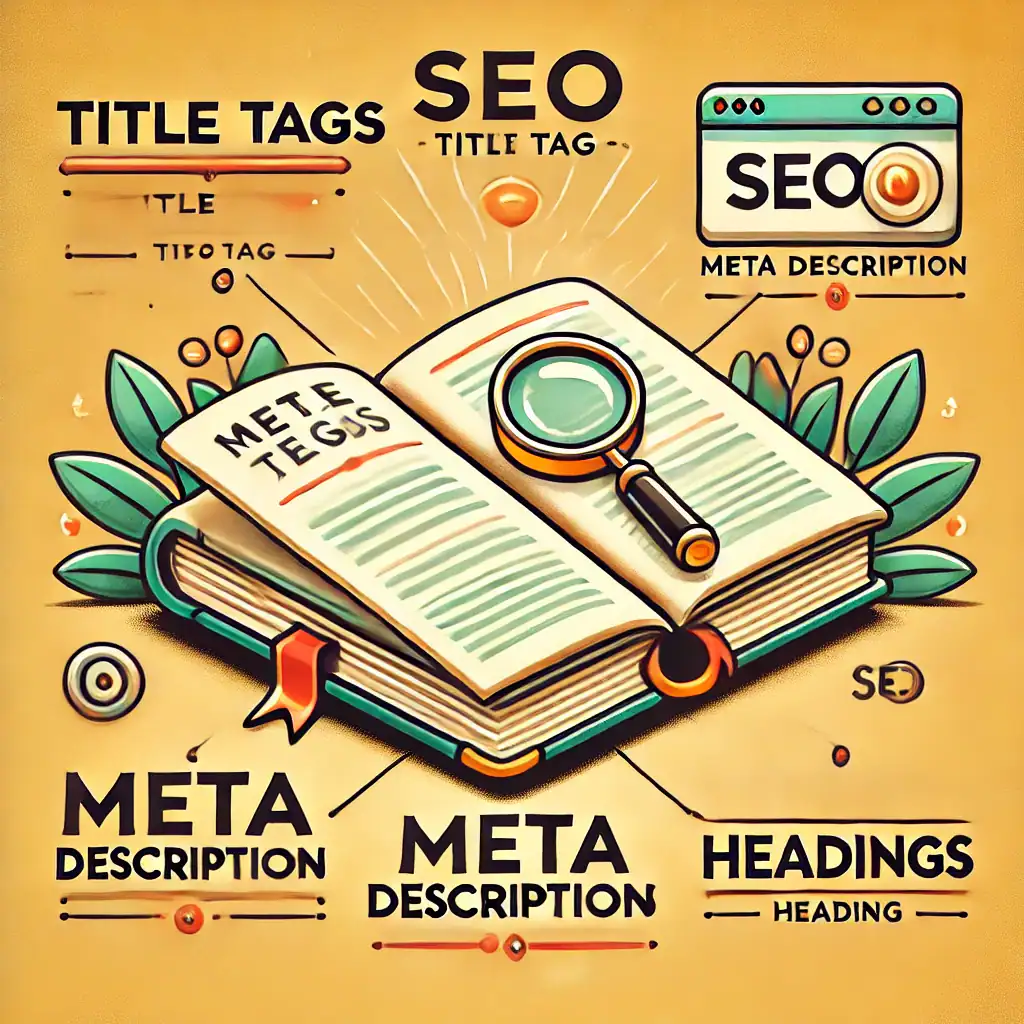7 Easy Steps to Optimize Your Website for on-page SEO
Getting your website noticed starts with learning the basics of on page SEO. It’s one of the most beginner-friendly ways to improve your rankings and attract the right visitors.
On-page SEO is one of the most critical factors in ensuring your website performs well in search engine rankings. It involves optimizing various elements on your website pages to make them more search engine friendly.
For beginners, mastering on-page SEO can seem daunting, but by following these simple steps, you can start to improve your site’s visibility and attract more traffic.
This guide breaks down on-page SEO into manageable tasks that anyone can implement.

Step 1: Optimize Your Title Tags
The title tag of a page is one of the most important on-page SEO elements. It’s the text that appears in the search engine results pages (SERPs) as the clickable headline for a given result and is crucial for usability, SEO, and social sharing.
- Best Practices: Keep your titles under 60 characters to ensure they display properly on SERPs. Include your target keywords towards the beginning of the title and ensure it accurately reflects the content of the page.
Step 2: Master Meta Descriptions
Including your main keyword in the title tag and meta description is a classic on page SEO technique—it helps search engines know what your page is about and encourages users to click.
- Best Practices: Keep meta descriptions between 150-160 characters. They should provide a concise summary of the content and include relevant keywords that match the search intent.
Step 3: Utilize Header Tags Properly
Headers help organize your content not just for readers but for search engines too. Using headers (H1, H2, H3) correctly can help boost your SEO.
- Best Practices: Use the H1 tag for your main title and use H2s and H3s for subsections. Include keywords in your headers, but keep them natural and useful for the reader.
Step 4: Optimize Your Images

Images can attract a significant amount of traffic from image search engines. However, search engines cannot view images directly but rely on accompanying text data.
- Best Practices: Use descriptive, keyword-rich file names for your images. Always fill out the alt attribute (alt text) to provide a clear description of what the image is about for search engines and for accessibility purposes.
Step 5: Improve URL Structure
The structure of your URLs can affect both your page’s ranking and user experience. A URL should be easy to understand and manage for both users and search engines.
- Best Practices: Keep URLs short and relevant to the page content and include keywords. Use hyphens to separate words, making them easier to read.
Step 6: Increase Site Speed
Page speed is a ranking factor, and faster pages provide a better user experience. Slow websites tend to have higher bounce rates and lower conversion rates.
- Best Practices: Optimize image sizes, leverage browser caching, and minimize the use of large files and plugins that can slow down page load times. Tools like Google’s PageSpeed Insights can provide recommendations to improve your site’s speed.
Step 7: Internal Linking
Internal linking helps search engines understand the structure of your website and the relevance of pages. It also helps with website navigation and can potentially increase the overall SEO of your site.
- Best Practices: Use descriptive anchor text that gives an indication of the linked page’s content. Link to important pages often to show search engines and users the hierarchy and value of these pages.
It might feel like there’s a lot to remember, but these on page SEO tweaks quickly become second nature with practice.
And Finally...
On-page SEO is fundamental to improving your website’s search engine visibility and user experience. By systematically addressing each component—from titles and headers to links and page speed—you can build a stronger, more competitive presence in search engines.
Remember, on-page SEO is not a one-time task but an ongoing part of maintaining your website. Regular reviews and adjustments to your on-page strategies based on performance metrics can lead to sustained improvements over time.
With these beginner steps, you can start to optimize your site effectively and lay a solid foundation for more advanced SEO tactics in the future.
I hope this helped clear up what on page SEO involves and how it can improve your site’s visibility. Are you starting to use any of these tips on your own site yet? Maybe you’ve got questions about what to focus on first? I’d genuinely love to hear about your progress, challenges, or tips in the comments below. Let’s learn together—step by step.
If you’re looking for an easy-to-follow training platform that covers SEO and more, I highly recommend Wealthy Affiliate—it’s where I learned the ropes myself, and their step-by-step approach suits beginners brilliantly.
If you’d like to read more about on-page SEO, have a look at these resources.
Here’s a little transparency: My website contains affiliate links. This means if you click and make a purchase, I may receive a small commission. Don’t worry, there’s no extra cost to you. It’s a simple way you can support my mission to bring you quality content.”

